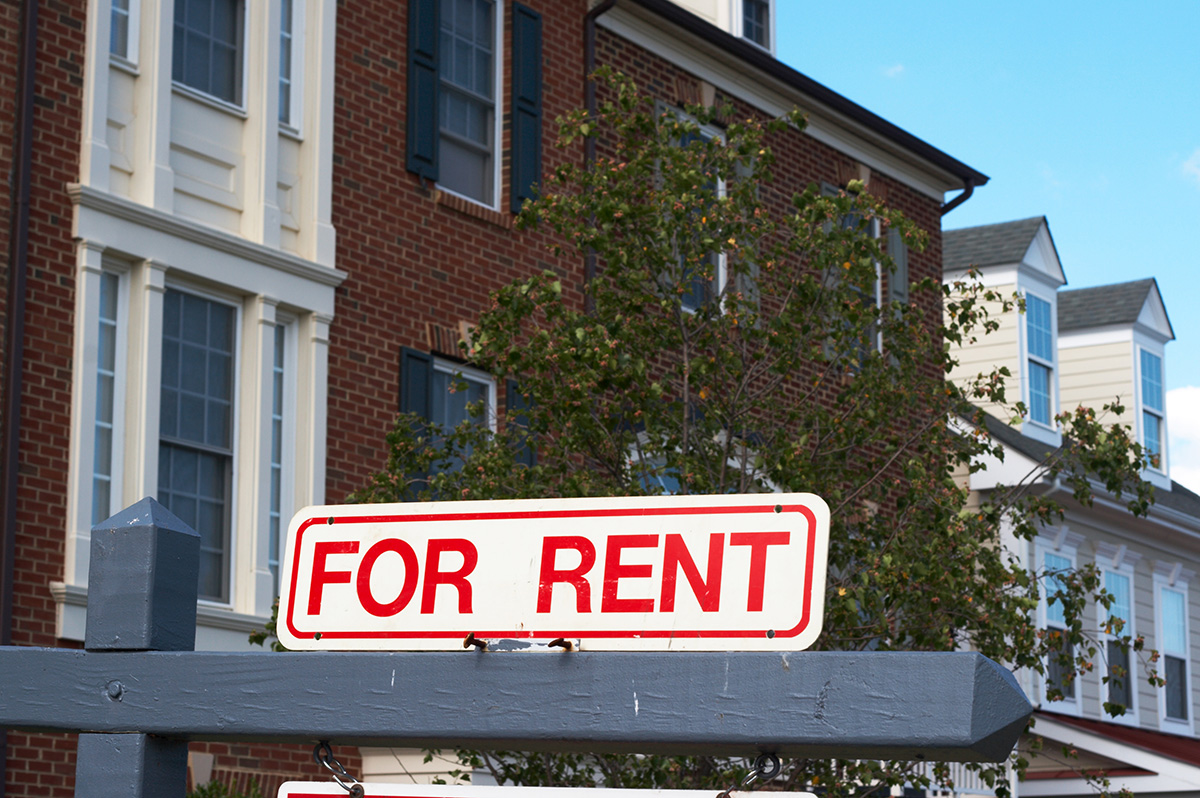Financial
Tax tips
Same-sex couples have some advantages when it comes to filing

By NANCY ORTMEYER KUHN
Tax season is here and now that multiple states recognize same-sex marriage, tax filing season has become a bit more complicated.
Due to passage in 1996 of the Defense of Marriage Act, the federal government does not recognize the newer state laws regarding same-sex marriages or civil unions. Only marriages between a man and a woman are recognized under federal law. This means that a same-sex couple is prohibited from filing as “Married Filing Joint” or “Married Filing Separate” on their federal tax returns.
The IRS makes this exceedingly clear in the Form 1040 instructions which state: “For federal tax purposes, a marriage means only a legal union between a man and a woman as husband and wife and the word ‘spouse’ means a person of the opposite sex who is a husband or a wife.” Thus, a same-sex married couple must file separate federal tax returns using the filing status of “Single” or “Head of Household” if there is a qualifying dependent. The question is whether, under state law, the state tax burden can be lightened if a different filing status is used.
In the District of Columbia, same-sex married couples may file jointly, separately but on the same return, or single. Unmarried domestic partners must be registered with the Vital Record Division of the D.C. Department of Health, in order to have tax filing (and other) options. Domestic partners also have the choice of filing jointly, separately on the same return, or single.
Depending on circumstances, head of household may also be an option for one or both partners if there is a qualifying child or other qualifying individual. If the couple has no dependents, the standard deduction for a joint return is $7,350 while each single filer has a standard deduction of $5,675. Unless there are other adjustments, it is usually better for each to take the $5,675 deduction and file as singles. If the couple has itemized deductions, then it may be more beneficial to file jointly. Or, if one spouse has a high income and one a low income, it may be better for the high income spouse to file as single and claim the itemized deductions and the lower income spouse to file as single and take the standard deduction, assuming the itemized deductions are actually paid by the higher income spouse.
This is not possible for male/female married couples, federal or state, and so an advantage can be gained over the options available to heterosexual married couples. Generally, a “mock” federal return will need to be completed with married filing joint as the status, in order to determine if filing jointly will be beneficial. As with all taxpayers, each single-sex couple’s individual circumstances will dictate which tax filing option is best, and professionals should be consulted in more complex situations.
If filing in New York, same-sex married couples are required to file using a married filing joint status, starting in 2011. The instructions are explicit that after filing federal taxes as “single,” the federal form 1040, including all attachments, must be recomputed using a married filing joint status, and then the couple must apply those revised numbers to the New York state return.
The IRS recently issued guidance in Publication 555, which includes general information for taxpayers who are registered domestic partners/same-sex spouses living in community property states. In general, the income of both spouses must be combined and each spouse reports half of the combined community income earned by the couple. Community property states that recognize same-sex marriages currently include California, Nevada and Washington state.
The gift tax return is another tax burden to be avoided. Heterosexual couples can freely transfer money and gifts to each other without incurring any gift tax. However under federal law same-sex married couples are limited to giving gifts totaling no more than $13,000 each year to each other, or a gift tax return will need to be filed by the gifter and the amount will be counted against the individual’s lifetime exemption. Therefore, any joint expenses should be paid through a joint account, with careful records kept to avoid recharacterization of joint expenses as gifts.
Whether filing jointly or separately, it is wise to keep precise records and to run the numbers in various scenarios with your tax advisor to ensure you are choosing the filing status that will result in the lowest tax burden.
Nancy Ortmeyer is with Jackson & Campbell.

Whether you are upgrading parts of your current home to prepare it for sale or enhancing the home you just purchased, kitchens and bathrooms are still at the top of the renovation list.
Kitchen renovations have always embraced a blend of functionality, personalization, and aesthetic appeal; however, homeowners are currently moving away from sterile, uniform designs, opting instead for spaces that reflect warmth, character, and individual style. Here are some of the most prominent trends shaping kitchen renovations this year.
Warm and Earthy Tones
The dominance of all-white kitchens is waning as homeowners gravitate toward warmer, earth-toned palettes. Shades like sage green, navy blue, and natural wood finishes are becoming popular choices for cabinetry, infusing kitchens with a cozy and inviting atmosphere. This shift reflects a desire for spaces that feel more personalized and less clinical. Flat panel and Shaker cabinets continue to be popular options.
Integration of Organic Modernism
The “modern organic” style is gaining traction, characterized by using natural materials, neutral color palettes, and serene layouts. Incorporating elements like soapstone countertops, Venetian plaster walls, slate floors, and greenery not only enhances aesthetic appeal but can also increase home values significantly. Fully outfitted outdoor kitchens further contribute to this trend.
Innovative Kitchen Island Designs
Kitchen islands continue to be central features, with designs evolving to incorporate textures, wood and tile cladding, multifunctional elements, and bold colors and materials. Integrated seating areas, waterfall countertops, and the use of monolithic stone or stacked marble are becoming increasingly popular. These islands not only serve as functional workspaces but also as striking focal points within the kitchen.
Concealed Kitchens for a Sleek Look
The concept of concealed kitchens is on the rise, emphasizing built-in appliances, flush cabinetry, and appliance garages to maintain a clutter-free environment. This design approach fosters a minimalist aesthetic, creating a seamless flow between the kitchen and adjacent living areas, particularly in open-concept homes.
Personalized Cabinetry and Storage Solutions
Customization is key in modern kitchen designs, with homeowners seeking tailored storage solutions that cater to their specific needs. Features like hidden storage compartments, integrated lighting, and unique hardware choices are being favored over generic, cookie-cutter options. This trend underscores a move toward kitchens that are both functional and reflective of personal style.
Revival of Traditional Styles with Modern Twists
Traditional kitchen styles are making a comeback, with a contemporary twist. Elements such as expanded backsplash coverage, classic tile shapes and patterns, use of mixed metals, and specialty appliances are being integrated into modern kitchens, blending the charm of the past with the conveniences of the present. Custom range hoods, coffee bars and microwave drawers are increasingly added to renovation projects. This fusion creates spaces that are both timeless and equipped for modern living.
Sustainable and Natural Materials
Sustainability remains a priority, with an increased use of eco-friendly materials like reclaimed wood, recycled metals and glass, and energy-efficient appliances. This not only reduces environmental impact but also introduces unique texture and shimmer into kitchen designs, adding depth and character to the space.
Use of Bold Colors and Accents
Homeowners are becoming more adventurous with color and texture, incorporating vibrant hues and tactile materials into their kitchen designs. Features like colorful window trims, two-tone cabinets, and the use of wallpaper and feature walls add visual interest and a personalized touch to the space. In addition to the familiar white, major appliances are now shown in matte black, navy, and jewel tones of red, green, and blue. There are even vinyl wraps and magnet covers that allow for more creativity and individualization with appliances.
Integration of Smart Technology
The incorporation of smart technology continues to grow, with appliances featuring automated cooking functions, sensor reheating, and control locks becoming more prevalent. Induction stoves are entering the mix. Charging stations and touch-activated cabinet doors and faucets are also popular. LED lighting lasts longer and prevents you from having to climb a ladder to change lightbulbs on a high or vaulted ceiling. These advancements enhance convenience and efficiency, aligning with the modern homeowner’s desire for a kitchen that supports a tech-savvy and busy lifestyle.
Multifunctional Spaces
Kitchens are increasingly being designed as multifunctional spaces that accommodate cooking, dining, working, and socializing. This has led to the inclusion of features like integrated seating, versatile lighting, and adaptable layouts that can easily transition between different uses, reflecting the evolving role of the kitchen in contemporary homes. Still, don’t be surprised to see a resurgence of self-contained kitchens with real walls.
So, whether the kitchen you want is sleek and modern, earthy and organic, or traditional and elegant, there will always be fresh new styles, ideas, innovations and classic touches that cater to your lifestyle.
Valerie M. Blake is a licensed Associate Broker in D.C., Maryland, and Virginia with RLAH @properties. Call or text her at 202-246-8602, email her via DCHomeQuest.com, or follow her on Facebook at TheRealst8ofAffairs.

Spring is the season of renewal—a time to refresh, declutter, and make space for better things. But spring cleaning isn’t just for your home. Whether you’re a landlord or a tenant, it’s the perfect opportunity to reassess your rental relationship.
Are landlords feeling disconnected from tenants? Are tenants feeling like their landlord is absent? Before considering drastic steps like moving, both sides can take positive, proactive measures to improve communication, set clearer expectations, and foster a mutually beneficial relationship. This article encourages both landlords and tenants to take stock of their rental experiences and explore ways to clean up misunderstandings before they become deal-breakers.
1. Dust Off the Lease: Revisit Foundation of Your Relationship
The lease is the roadmap of your rental journey. Are both sides following it?
For Landlords:
• Review Key Terms: Ensure you fully understand your obligations under the lease and DC law, including maintaining a habitable unit, providing essential services like heat and water, and ensuring repairs are done for safety compliance.
• Clarify Expectations: Is there a disconnect between your expectations per the lease and what you are observing at the rental? Remind tenants of areas that are covered in the lease in a proactive and positive manner to make sure all are on the same page.
• Mid-Lease Check-Ins: A casual mid-lease meeting or email can clarify expectations and correct misunderstandings or interpretations of responsibilities before they become issues.
For Tenants:
• Understand Your Rights and Responsibilities: Review your lease to see what your landlord is required to provide. In DC, landlords must ensure safe, habitable living conditions, but cosmetic changes or upgrades are not guaranteed, unless specified in the lease.
• Know What’s Reasonable: Yes, you have a suite of rights in the District of Columbia which must be respected. Certain societal expectations may not be realistic if they weren’t part of the original agreement. You can always request improvements that are not required of the landlord, but be prepared to respectfully accept the outcome if the response is “No”.
• Proactive Communication: If you have concerns about your rental, present them as collaborative questions. For example, “I noticed X—how would you like for me to address this?”
2. Declutter Communication Channels
Miscommunication is often the root of rental frustrations. Let’s clean that up.
For Landlords:
• Preferred Methods of Communication: Are you providing clear ways for tenants to reach you? Ensure you’re responsive to emails, phone calls, or portal messages.
• Seasonal Reminders: Proactive messages about maintenance (e.g. start cutting the grass, apply pre-emergent weed control, etc) can reduce escalations later.
• Feedback Opportunities: Invite tenants to share concerns in a structured manner—perhaps a quarterly email check-in.
For Tenants:
• Respectful Clarity: When reaching out, be specific about your needs. Instead of “the heater isn’t working,” try “the heater hasn’t been turning on in the evenings and only blows cold air. Could someone check it this week?”
• Understanding Response Times: Some complex issues take longer to resolve. Remain reasonable on expectations and consider the explanations for delays. Understanding that cosmetic concerns may not be prioritized can also help.
• Log Your Communications: Keep a record of all major discussions for clarity and protection.
3. Polish the Relationship: Turn Good Experiences into Great Ones
Small efforts can shine a spotlight on the positive areas in your rental relationship.
For Landlords:
• Recognize Good Tenants: Expressing appreciation for on-time rent payments or good upkeep fosters goodwill.
• Offer Incentives: Small gestures like discounted renewal rates or minor upgrades can encourage long-term, responsible tenants.
• Educational Resources: Provide additional information on how your tenants can maintain aspects of the home, such as garbage disposal care or HVAC filter changes.
For Tenants:
• Be a Proactive Renter: Report maintenance issues promptly and keep the property clean and damage-free. Execute routine maintenance that is your responsibility, such as changing out air filters reliably.
• Community Mindset: Participate in neighborhood events or property meetings, which can strengthen your relationship with the landlord.
• Extend Courtesy: Flexibility with maintenance schedules and clear communication during repairs make things smoother for everyone.
4. Freshen Up Expectations: Reset Standards for Healthier Relationship
Spring is the perfect time to hit the reset button.
For Landlords:
• Collaborate on Solutions: If there are tenant issues (e.g., noise complaints), approach them with a solutions-oriented mindset.
• Transparency with Changes: If rent adjustments are necessary, provide clear explanations and as much notice as possible.
• Renewal Conversations: Discuss future plans early to avoid surprises at lease-end.
For Tenants:
• Understand Market Realities: Rising costs may mean rent increases. Assess whether your current rental still fits your budget and needs.
• Negotiate Thoughtfully: If requesting upgrades or improvements, frame them as benefits for both sides.
• Express Gratitude: A little appreciation can go a long way—thank your landlord for prompt repairs or responsiveness.
5. Knowing When to Move On
Sometimes, despite best efforts, it’s time for a change—but separation can still be positive.
For Landlords:
• Identify Red Flags: Consistent late payments, damage, or lease violations may necessitate initiating a conversation about a potential move for the tenant.
• Follow DC Regulations: The District of Columbia has strict tenant protection laws. Always provide proper notices and follow legal protocols to avoid complications.
• Exit with Professionalism: Treat the end of a lease as a business transition—keep emotions in check and document all steps.
For Tenants:
• Know When It’s Time to Go: If safety, habitability, or repeated issues aren’t resolved despite your best efforts, it may be time to move on.
• Provide Proper Notice: Adhere to lease terms regarding notice periods and leave the property in good condition.
• Leave on Good Terms: Positive references from previous landlords can make applying for future rentals more successful.
Conclusion: Spring Forward, Together
A little spring cleaning in your rental relationship can make a world of difference. For landlords, it’s about resetting expectations, enhancing communication, and retaining good tenants. For tenants, it’s about understanding your rights, being proactive, and collaborating for a better living experience. By refreshing how both sides approach the relationship, you can avoid unnecessary turnover and create a rental experience whereall parties can thrive. After all, sometimes a little tidying up is all it takes for a rental relationship to blossom anew.
Scott Bloom is owner and senior property manager at Columbia Property Management. For more information and resources, go to ColumbiaPM.com
Real Estate
Find a way to participate in the sharing economy
Earn extra cash by walking dogs, renting your car, and more

If you could turn back time, would you find a way to participate in the sharing economy? If you own a home, a car, or have other resources or skills, you may still be able to. So don’t fret, SNAP OUT OF IT! (Anyone getting the Cher references so far?)
Recently, companies like AirBnB, VRBO, Uber, Lyft, Couchsurfing, Upwork, TaskRabbit, LendingClub, Poshmark, Meowtel, Rover, and Neighborgoods (among others) are allowing people to share their resources. Goods and services such as cars, money, homes, couches, clothing, business skills, tech or maintenance, design, dog walking, financial and accounting help, graphic design, among other skills can be shared with others for a price. People are finding ways to use the underutilized resources of their time, possessions and knowledge to make extra money, pay down debt, pay off bills, finance vacations, or just pay for those expensive eggs.
For homeowners, these resources can help offset the costs of owning and financing a home or allow the bandwidth to finally take that three months abroad or six-month sabbatical they have been desiring. As with any investment of time or resources, you will have to assume some risk. If you are renting out your car or home, there will be wear and tear. If you are lending money, there is a risk of it not being returned. If you are selling gently used clothing online, the item could be returned, or the payment does not go through. These are risks one must take into consideration when starting any new enterprise. But as they say, without any risk, there can be no reward.
The sharing economy is based around peer-to-peer transactions. There is renewed emphasis on having experiences, less societal pressure for consumption, and embracing the access to experiences via online platforms. It’s not uncommon for many urban dwellers to own only one car, or not even own a car due to the access one has via the sharing economy. Vacations can be afforded via the peer-to-peer networks where a group of five people can stay in a luxurious setting at a favorite getaway destination for a fraction of the cost of a hotel and all meals out.
When one decides to venture into offering their home or car for these types of transactions, a wise tip to remember is that this is still operating a business. Customer service matters. Cleanliness, prompt attention and communication are key. It will require knowledge toward budgeting, setting competitive prices, creating memorable customer experiences, listening to constructive feedback, and using those customer service skills we all expect to see when we are dining out, staying at a hotel, or flying an airline.
If you would like to learn more about how to leverage your own resources to up your monthly income or free up your schedule, please don’t hesitate to reach out. I offer affordable seminars in creative thinking and digital marketing, to help people make use of their spare time, resources and energy.
Joseph Hudson is a referral agent with Metro Referrals. Reach him at 703-587-0597 or [email protected].














